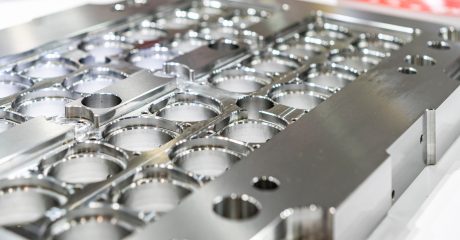Injection molding is well-known for its all-around, wide-ranging applications. A big reason for this universal success is the massive variety of compatible injection molding materials. In this article, we discuss some of the most common injection molding plastics in detail. Injection molding is compatible with so many plastic materials that its products are common in every household and industry. It is virtually impossible to cover all of them in a single write-up. Therefore, we have hand-picked the most popular ones.
Acrylic
Acrylic, is a thermoplastic material that has decent mechanical strength, is lightweight, and has a clear, see-through appearance. Although not ductile, it sports good shatter resistance. Moreover, one of its biggest strengths is its ease of machinability. After injection molding, acrylic parts are easy to alter and finish.
Acrylonitrile Butadiene Styrene (ABS)
ABS is one of the well-recognized injection molding materials. It has good strength and toughness, impact resistance, and chemical resistance to acids, bases, and oils. It is completely opaque and can be injection molded in many colors. On top of this, it is quite cheap compared to other plastic injection molding materials in this list. However, it does not fare well under direct sunlight or moist environments though.
Nylon Polyamide (PA)
Nylon is an excellent material with high toughness, heat resistance, and surface friction/wear properties. It is a natural compound that is also manufactured synthetically. Its synthetic form is highly utilitarian for injection molding applications. Its common grades are:
- Nylon 11: A bio-based polymer with good impact strength, dimensional stability, and UV resistance. It also has extremely low water absorption.
- Nylon 12: It is quite similar to Nylon 11 but with slightly lower impact strength and higher abrasive and UV resistance.
- Nylon 46: It is great for high-temperature applications requiring high impact strength, wear resistance, and chemical as well as electrical resistance.
- Nylon 66: A good alternative to metallic components. It has high stiffness, strength, abrasion and wear properties, and fatigue resistance.
Polycarbonate (PC)
PC has outstanding toughness, shatter resistance, and impact resistance. It has a transparent appearance. Additionally, it has the desirable quality of maintaining its mechanical properties and appearance for a wide temperature range. Thus, it operates well in high-temperature environments.
Polyoxymethylene (POM)
POM is best known for its suitability for products requiring high precision. It has great dimensional stability due to its rigidity and stiffness. Moreover, it has a low coefficient of friction and good lubricity, making it ideal for contact-intensive applications. Furthermore, its properties remain stable at very low temperatures as well.
How to Choose Material for Your Project
Here is a short and comprehensive injection molding material selection guide. It is not a sure-fire method to pinpoint the injection molding material you need, but it can help you shortlist your material options to a manageable few.
- Material Hardness: Hardness is an important characteristic that cannot be compromised in most cases. Nylon grades perform well in hardness-related applications. For very high performance, Thermoplastic Polyurethane (TPU) is a strong candidate. However, beware that the material itself and its injection molding is costly.
- Flexibility: A bunch of injection molding materials is flexible. Of these, Thermoplastic elastomer and Polypropylene are quite suitable for applications with high flexibility requirements. TPE is usually better in terms of fatigue resistance and high temperature, but PP is recyclable and safer to use.
- Cost: In terms of material costs, PP and PS are perhaps the best options. Both are cheap and readily available.
- Temperature Resistance: Nylon and ABS are excellent at maintaining their shape and material properties at high temperatures. POM is very stable at sub-zero temperatures.
- Applications: It all boils down to the intended application at the end. The material you select should be a strong candidate for the end-user applications.
Custom Tool’s Services
When you need a custom tool, you need a partner who can meet you more than halfway, whether you’re developing a new tool or looking for a way to manage your existing inventory. Customers trust us to meet this need for three main reasons: experience, quality and fast delivery! Contact us today for more information.
